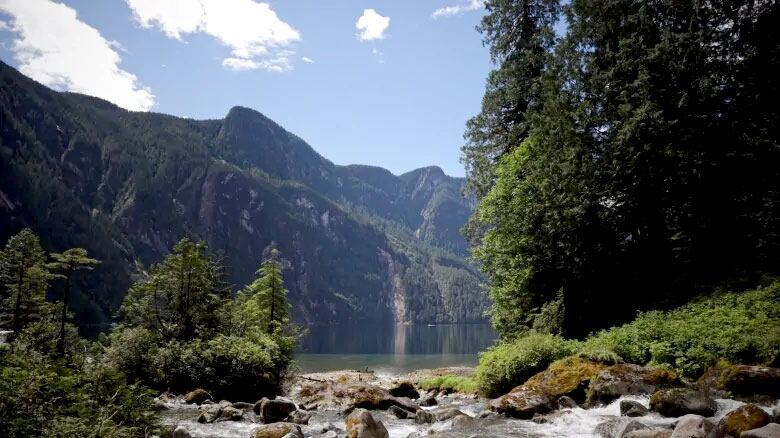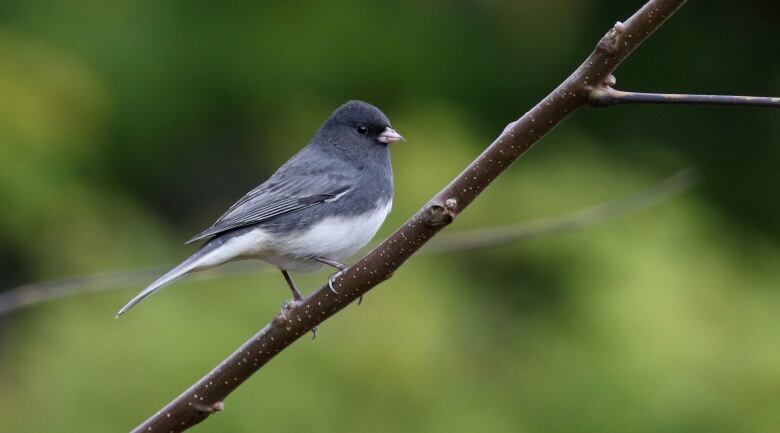Greta Thunberg has talked about a 'carbon budget.' What is it, and why does it matter?
Also: How to help save the birds

Hello, people!This is our weekly newsletter on all things environmental, where we highlight trends and solutions that are moving us to a more sustainable world.(Sign up hereto get it in your inbox everyThursday.)
This week:
- What do we mean by a 'carbon budget'?
- Crowdfunding to preserve B.C. coastal wilderness
- What you can do to save the birds
The carbon budget: What it is, why it matters

"If we are to have a 67 per cent chance of limiting the global temperature rise to below 1.5 degrees [C], we had, on Jan. 1, 2018, 420 gigatonnes of carbon dioxide left in our CO2 budget. And of course, that number is much lower today. We emit about 42 gigatonnes of CO2 a year. At current emission levels, that remaining budget is gone within 8 1/2 years."
Those words were delivered by youth climate activist Greta Thunberg to the French parliament on July 23, 2019. She said she has not heard much on the subject of a "carbon budget," either from politicians or the media. But what's left in our carbon budget is of utmost importance if we hope to limit global warming.
Simply put, this budget refers to how much carbon which includes CO2 and other greenhouse gases like methane we can emit into the atmosphere before we pass the point of warming the Earth to 1.5 C or 2 C.
The carbon budget was discussed in the first of three special reports by the Intergovernmental Panel on Climate Change (IPCC), released in October 2018. The final instalment, the Special Report on the Ocean and Cryosphere in a Changing Climate (SROCC), will be discussed in Morocco this weekend, with a summary due to be released next Wednesday.
The Paris Agreement seeks to limit a global temperature rise to 2 C above pre-industrial levels this century (with a goal of keeping it to 1.5 C). The key to understanding the carbon budget is that even if countries keep in line with the Paris accord, if the budget is depleted by then, it won't matter. The damage will already be done. And it will be irreversible.
"If you think about annual emissions and reducing emissions without thinking about the carbon budget, you could really blow past the Paris Agreement," said Brenda Ekwurzel, director of climate science at the U.S.-based Union of Concerned Scientists. "That's the trouble."
After a few years of stable global CO2 emissions, they rose in 2018, and there are concerns they may rise again in 2019.
If we don't pay attention to the carbon budget, it increases the chance of a host of global problems: the loss of coral reefs, no summer sea ice in the Arctic, more severe weather events and changes in crops that could lead to further food scarcity.
If it sounds dire, Ekwurzel said we have the power to change the trajectory.
"Whenever we've been faced with a problem before and really lean into it, we make big changes," Ekwurzel said. "And a lot of those changes we're calling for, we can do."
She said we need to look at deep de-carbonization of our energy supply, as well as doing "nature-based enhancements," including the expansion and protection of carbon sinks such as forests, wetlands and mangroves, as well as seagrass. Ekwurzel stresses that economists say the transitions are economically feasible.
Like Greta, Ekwurzel said it's time that everyone governments, organizations, businesses, and yes, consumers begin to pay more attention to that budget that is nipping at our heels. She insists that together, we can make a difference.
"Yeah," Ekwurzel said. "We can do this."
Nicole Mortillaro
Reader feedback
The period between Sept. 20 and 27 is shaping up to be quite significant for climate action, with a major summit at the United Nations and major climate strikes planned for the next couple of Fridays. Will you be taking part in the strikes? Let us know.
Emailus atwhatonearth@cbc.ca.
Old issues of What on Earth? are right here.
The Big Picture: Crowdfunding land preservation
Late last month, a group of concerned citizens raised enough money to buy 800 hectares of wilderness on B.C.'s Sunshine Coast. The crowdfunding campaign operated by the B.C. Parks Foundation, an independent charity that works with B.C. Parks, raised $3 million to buy the expanse of land in Princess Louisa Inlet from a private seller. The aim of this purchase? Preservation. Andrew Day, CEO of B.C. Parks Foundation, said the organization wants to save the land from logging and other development. Said Day, "We'll do our best to make sure that that area stays protected forever."

Hot and bothered: Provocative ideas from around the web
-
In a sign that he is raising the stakes on climate action, United Nations secretary general Antonio Guterres has barred leading economies such as Japan and Australia from speaking at the UN's upcoming climate change summit because they're building new coal power plants.
-
Climate scientist Katharine Hayhoe, who is employed by Texas Tech University, is one of the most lucid and important voices in the global discussion about climate action. She's also Canadian, and this week she was named a United Nations Champion of the Earth, the UN's highest environmental honour.
- Sun-rich Egypt has built one of the world's biggest solar installations, and it is about to go live. The 1.8-gigawatt array contains more than seven million panels and will be visible from space.
What you can do to save the birds

A new study, led by Ken Rosenberg at the Cornell Laboratory of Ornithology, has foundthere are three billion fewer birds in North America than there were in 1970. The Canadian and U.S. researchers behind the study say that habitat loss is likely the main cause, and conservation can make a difference, as shown by the increased populations of waterfowl and birds of prey.
But besides lobbying the government and donating money to conservation groups, there are also individual actions people can take to help protect birds.
Here are seven things the researchers, and the bird conservation and research groups that support them, suggest through their website 3billionbirds.org.
Reduce the chance that birds will hit windows. Use film, paint or string to break up reflections to prevent daytime collisions. And turn lights out at night.
Keep cats indoors. Cats are the second-highest human-related cause of bird declines after habitat loss, the researchers say. Keep cats indoors, or in an enclosed "catio" or on a leash when outdoors.
Replace your lawn with native plants. Native plants can provide shelter, nesting areas and food for birds such as nectar, seeds and berries that grass doesn't. You can find more info on "greener" lawn alternatives here.
Avoid pesticides. Pesticides can harm seed-eating birds that accidentally eat treated seeds, as well as indirectly damage insect-eating birds by killing their food source.
Buy shade-grown coffee. To grow coffee in the sun, farmers often clear forests that migratory birds need for food and shelter. Shade-grown coffee preserves that forest. The Smithsonian Migratory Bird Center has even created a certification for "bird-friendly coffee" that includes organic and fair trade standards.
Cut back on plastics. Studies show that at least 80 seabird species mistake plastic for food, the researchers say.
Watch birds and help track them. Anyone can participate in citizen science projects like Project FeederWatch, the Christmas Bird Count or the Breeding Bird Survey, which was key to generating the data in the study. Apps like eBird can make it easy to submit your everyday sightings. You can learn more about nature apps here. We've also talked about their use in saving the bees in a previous issue.
Emily Chung
Stay in touch!
Are there issues you'd like us to cover? Questions you want answered? Do you just want to share a kind word? We'd love to hear from you. Email us atwhatonearth@cbc.ca.
Sign up hereto getWhat on Earth?in yourinbox every Thursday.
Editor: Andre Mayer | Logo design: Skdt McNalty












_(720p).jpg)


 OFFICIAL HD MUSIC VIDEO.jpg)
.jpg)



























































































